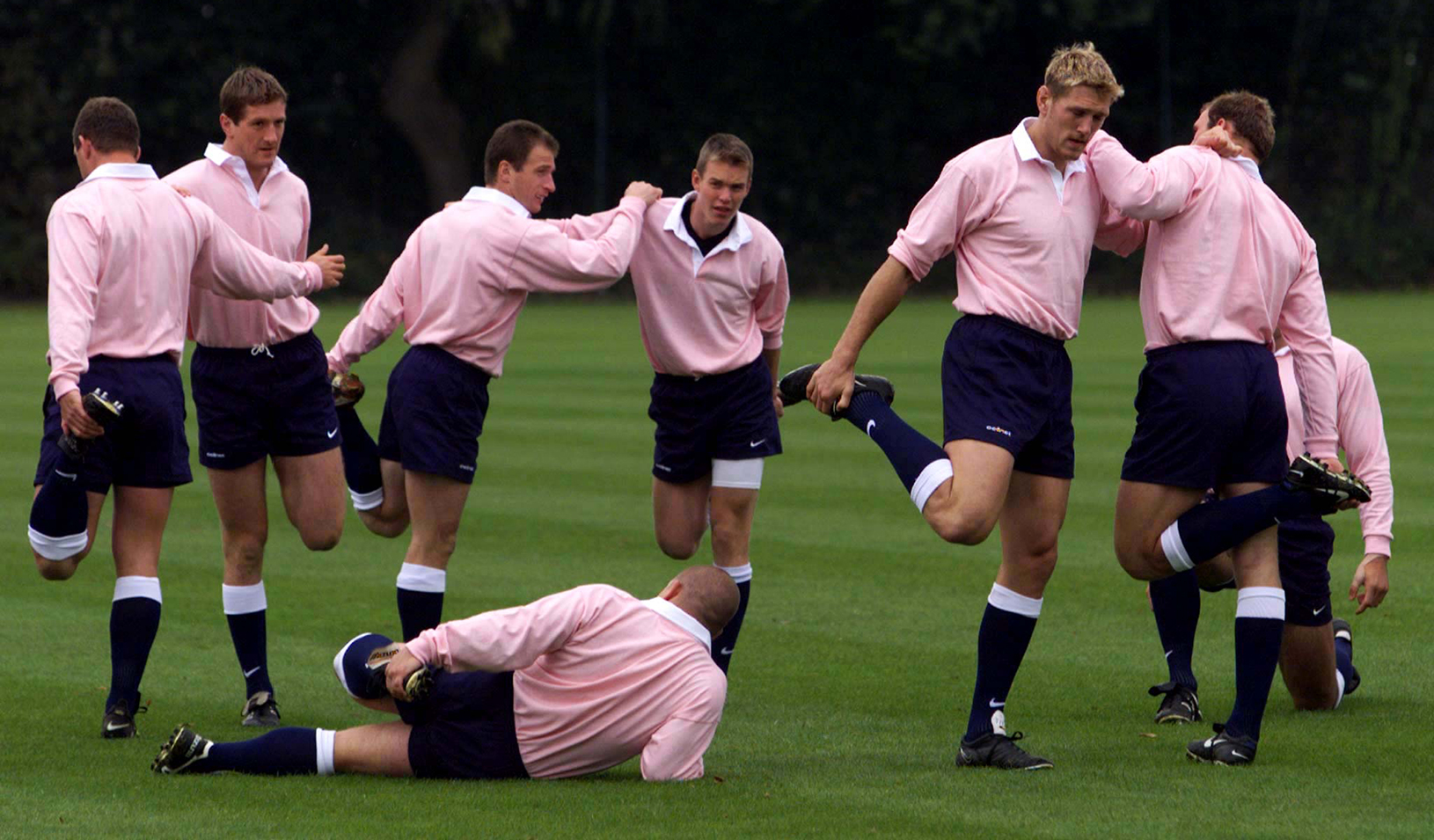
During the second annual Stanford Graduate School of Business Sports Innovation Conference, leaders from all corners of the sports world gathered to share their insights on pushing the boundaries of the industry. From building winning traditions on the backbone of technology to harnessing the dynamics between fan and franchise, teams must have a thirst for innovation to compete — both on the field and in people’s hearts — in the 21st century. Here are a few of the trends that are shaping the future of sports, today.
Virtual Training is Becoming Reality
Virtual training has always been more fantasy than reality in sports. Attempts to train football players with virtual reality, or VR, “has been going on for 20 years,” said Stanford head football coach David Shaw. “All of them have failed; all of them have been terrible.”
Sports Tweet
#NFL QB and Stanford grad Trent Edwards showing @strivrlabs #VirtualReality demo #SportsBiz pic.twitter.com/rTTMwPa0MA
— Rich Campbell (@SprtsMktgProf) April 15, 2015
But the team behind STRIVR Labs, a product of Stanford’s Virtual Human Interaction Lab, may have cracked the code. Its technology could revolutionize how quarterbacks, in particular, can hone their decision-making skills and speed up their reaction times — and without having to drag the full team onto the practice field.
It comes down to what’s known in the field of VR as “presence,” the psychological phenomenon of feeling like you’re actually inside the simulation. Such realism is made possible by filming actual players and events on the football field, rather than relying on 3-D modeling or video-game effects. The result is immersive enough that, for the athletes who have used it, “as far as their brain is concerned, they’re actually running a play,” Shaw said.
Shaw said that Kevin Hogan, Stanford’s starting quarterback, had his best three games after he started training with VR at the end of the 2014 season. “He was always big, fast, strong, and a heck of a quarterback,” Shaw said. “We got him to think a little bit quicker with immersive virtual reality.”
While STRIVR believes that the killer app for VR is in training and simulations, Dan Reed, head of global sports partnerships for Facebook, sees limitless potential for VR in entertainment. “99.9% of NBA fans globally will never be able to sit courtside,” he said. “But with VR you can literally transplant people to that experience and sell a billion courtside tickets for every NBA game all season long.”
Harnessing Limitless Data
Over the past decade, one thing has become increasingly clear: Sports teams can no longer expect to just get the best players and win. As more organizations dedicate resources to the quantitative side of sports, from advanced statistical analysis and predictive modeling to the booming field of tracking performance with biometric devices, the playing field has leveled. The new competitive advantage won’t come to the teams that are capable of gathering the most data. It’ll go to the teams that can quickly and efficiently make sense of it all.
That means big opportunities not only for businesses that can help quantify performance metrics with atomic precision, but also for those that can funnel that data into coherent, useful information. “We already gather so much data, but we’re not necessarily finding the right story to present to the player or the coach,” said Richard Heal, chief technology officer of Sparta Software Corp. “We want to get coaches back to coaching. We have too many coaches spending too much time in spreadsheets, collating data.”
Mark Verstegen, founder and president of EXOS, which designs training programs, added that even an organization outfitted with the most cutting-edge technologies won’t benefit much if it’s not built to act upon the very data it’s gathering. Teams need to have a “supply-chain management of human performance” — people in positions to make coordinated efforts to help athletes sleep better, eat better, move better, reduce injury, and improve performance based on what trainers, nutritionists, therapists, and other specialists find in the data. “That’s where the big gaps are,” he said.
Brian Kopp, Catapult Sports’ president of North America, estimated that only 5% of pro and college athletes are using some sort of biomechanical devices, and even then it’s almost entirely in training, as most leagues are only beginning to consider allowing them on the field during games. But if you look at the most successful teams in any sport, he said, you’ll find the ones that are the most aggressive in their adoption of advanced training and tracking technologies. And anyone leading an organization that isn’t doing something in this area won’t have a job soon. “They’ll be replaced by someone who gets it,” Kopp said.
Still, questions emerge around the proliferation of biometric technologies.
Getting players, especially older ones, to buy in is one challenge. Kopp said the key is showing them that, rather than quantifying how their skills might be deteriorating, performance data will help them to extend their career and maximize their earning potential. “Once you do that, they’re usually very enthusiastic about it,” he said.
Another issue is the question of who owns the data — the player, the team, or the technology manufacturer? Also, what limitations need to be put in place? “We sometimes forget that athletes are human,” Heal said. Just because teams pay athletes millions of dollars, does that give them the right to know what players are doing in their off time?
“There’s a person living inside that body,” Verstegen said.
Concussion Research Is on the Cusp of Innovation

Not too long ago, said Steve Fainaru, senior writer for ESPN and co-author of League of Denial, concussions were seen as little more than the brain’s equivalent of a stubbed toe, “a mostly benign injury that merited little scientific research.” In the past few years, however, hundreds of millions of dollars have gone into improving diagnosis and treatment, and there has been a flood of research addressing the very real and very visible public health concern of head trauma.
Scott Anderson, director of athletic training at Stanford, said despite this raised awareness, one of the primary roadblocks in making progress is that there are few, if any, objective diagnostics. “We need better evidence and better tools,” he said. Once there are ways to prove that something has happened — immediately, on the sidelines, and without relying on the player to initiate treatment — more systematic progress can be made to tackle the issue of prevention.
New technologies that are helping to understand what happens to the brain after trauma include accelerometers embedded into mouthguards that measure and correlate impacts to confirm that an event has taken place, and a highly sensitive eye-tracking procedure that can be done in under a minute to assess brain function and performance. “In my opinion, this is where the solution lies, and this is where the innovation is happening,” Anderson said. “Eye movement as a performance measure — you’re going to see that blow up, just like data analytics has blown up. I think ocular motor analytics is going to be a huge thing in the future.”
Say Goodbye to Paper Tickets — and Hello to Mobile Upgrades
The mobile revolution has come to sports ticketing. Paper tickets are going the way of the typewriter, and many fans will be buying via their devices. (In fact, one recent survey showed 37% of fans bought tickets on their smartphones or tablets.)
As people grow accustomed to using their phones for instant purchases, it opens up sporting events beyond super fans to anyone looking last-minute for a day’s entertainment. It’s a new universe of demand, said Gametime United’s chief revenue officer, Colin Evans. For one San Francisco Giants game, he said, “people were buying six-pack, eight-pack tickets, a few innings into a game, and leaving the bar they were at to walk into the ballpark.” Russ Stanley, the Giants’ managing vice president of ticket sales, says the team sees a 10% no-show rate at an average game. The team is experimenting on ways to resell those tickets. For example, the team offers season ticket holders a percentage of their ticket price back if they allow the team to resell the seats.
Beyond just rethinking the ticket purchasing process, teams are also retooling the foundation of the gameday experience via mobile devices. They are developing apps that can enrich your visit by offering you a mid-game seat upgrade, for instance, or helping you get on the court during the half-time entertainment. These apps are also easing some of the pain points of visiting the stadium in person. The technology at the San Francisco 49ers’ Levi’s Stadium, for one, lets fans watch instant replays, order merchandise and food from their seats, or find the shortest bathroom line, all from their phones.
Key Demographic: Women and Children
Many sports teams are thinking about the future of their fan base to ensure they have a next generation of fans 10 to 20 years down the road. A prime focus for that is connecting with women and children, said Lululemon vice president Sarah Veit Wallis. She cites Major League Baseball Commissioner Rob Manfred, who said the two key drivers of fan loyalty are the age of that first attendance at a game and participation in the sport itself. “If you think about it, that’s women and children,” she said, as women are traditionally responsible for their children’s involvement in activities.
The first step to building this key demographic base is understanding their needs, Wallis said. “You need to have more than just a family area. That’s not that much fun,” she said. One piece of advice she offered: Keep the family section far away from diehard Raider Nation fans (who tend to have a rowdy reputation). Also, it’s crucial to meet pressing concerns, especially health-related ones, head on. “Let’s recognize that concussions are an issue, not sweep it under the table. Unless I feel comfortable that I’m getting all the right information on what the risks are and how they can be mitigated, my kid is not going to participate.”
— Shana Lynch contributed to this story.



